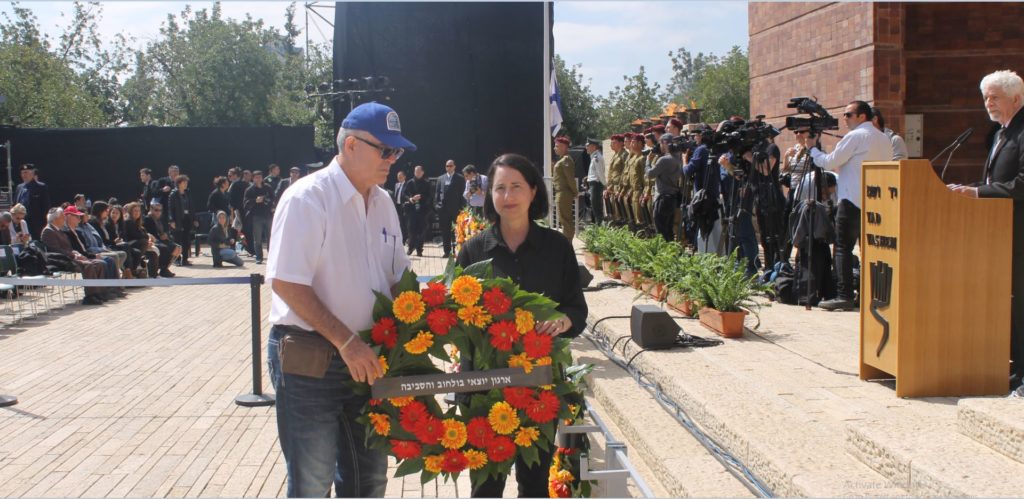Shlomo sent us.
The soldiers inquired why we were in the special line for the memorial ceremony at the most solemn place in Israel. Security at Yad Vashem, the Holocaust memorial museum, was tight.
“Shlomo sent us.”
Where is your invitation? Your badge?
“Shlomo sent us.”
So…who is Shlomo?
“Shlomo is from Bolechiv.”
So… what is Bolechiv?

Shlomo Adler was one of the 40 Jewish survivors from the Polish town of Bolechiv. He was the source of much of the background for the best seller “The Lost,” by Daniel Mendelsohn. Shlomo’s own autobiography “A Jew Again” is an eleven year old’s harrowing tale of terror and risk. Bolechiv was also my grandfather’s town, and in Shlomo’s book I learned the fate of my cousin, Shlomo’s friend. I wanted to know more. Shlomo, 87 years young, became my email buddy. He was generous sharing maps, photos, and recollections, which led to an invitation for my husband Richard and I to meet him in Israel.
A few days before our meeting, he mentioned his sons would be observing a ceremony for Bolechiv on Yom HaShoah. Would we like to go?
At Yad Vashem, the questions continued.
Where are you from? Identification? Passports? Are you carrying weapons for self defense? Three checkpoints later, this middle aged American couple who had “Shlomo – 9 a.m. Yad Vashem” written on a scrap of paper was admitted.
Through the walkway honoring the Righteous Among the Nations we reached the open plaza where hundreds of chairs were set. They held colorful flower wreaths with ribbons denoting town names and delegations from many countries and religious orders. Escorted to the front, we encountered the wreath designated chairs for the Bolechiv delegation, and Shlomo’s 60-ish sons Avi and David.
They insisted we join them instead of standing in the back. “You are a Bolechiver, so this is your place!” The ceremony began when Netanyahu and other officials entered in front of us. The audience was silent. The scores of armed soldiers, cameramen and reporters were silent. It felt like the whole world was silent.
Having woken up that morning assuming we were going to be distant spectators at a small reception for just Bolechiv survivors, I was quite jolted when Avi told me that I was now the representative and would lay the Bolechiv wreath. In front of all Israel, on TV, with tears running down my face, I insisted he come with. I wasn’t sure I could walk there alone.

Nina Edelman, of Fox Point, read names of those killed in the Holocaust at Yad Vashem, Israel’s national Holocaust Museum, on Yom HaShoah.
My thoughts were only of my Grandfather, David Neubauer, and what he would have to say if he knew his American grandchild in Jerusalem one hundred years after leaving his shtetel, laid a wreath remembering the people he never saw again.
Next, the Hall of Remembrance. The interior is the iconic darkened space with names of concentration camps on a sunken floor. Avi and others in line held papers – lists of loved ones who perished. Could I be a part of the public recitation of victim’s names? Quickly I entered family members, whose names I had recently learned, on my cell phone. Within minutes, at the podium, alone in that dramatic space, it was my turn to employ the privilege, and duty, to bring those names into the light. Saying the names that hadn’t been uttered for many years would never undo the injustice, but recognizing them brought a small measure of closure. We then walked across the floor, and placed white carnations on the letters spelling Belzec, where many of the Bolechiv souls perished.
By the end of the day, the names of the heinous death factories were smothered by hundreds of white flowers dropped by people from all over the world.
Nina Edelman is a resident of Fox Point. She was the founding librarian at Milwaukee Jewish Day School.



